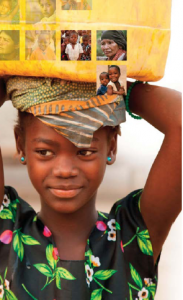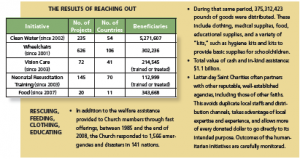This week’s pre-Christmas post is a question originally asked to Ask a Feminist that was referred over here to the Women’s Service Mission.
Bethany writes:
Dear Ask-A-Feminist,
My husband and I decided that instead of giving gifts to our families this year, we want to donate to a charity in their names. I know I probably waited too long to ask, but do you know of any good, legitimate charities that support women and/or their families? In the past, we have given to a couple of places and then subsequently gotten piles and piles of fancy mail asking us to give more. It makes me wonder if they spend all their money on mailings. Any ideas are welcome. Thanks so much.
Bethany
Bethany,
Thank you for writing in. Ask a Feminist bumped this over to me at the Women’s Service Mission. You’ve asked a great question and thank you for thinking along these lines for your Christmas giving this year. For years, my aunt gave gifts that were donations on behalf of her loved ones so I can tell you from experience that I really appreciate the thought of a gift like that in my name.
You are absolutely right to suspect charities of wasting money on frequent and expensive mailings. My husband and I have lamented the same thing of some charities. I will warn you away from The Ocean Conservancy for this reason.
The idea I am most excited to tell you about is gifting Kiva donations to your family members. The authors of Half the Sky are highly complementary of the Kiva effort to fund microloans with money loaned by people around the world. Recently, Groupon has offered a discount on the minimum loan amount where you can purchase a $25 loan for $15. This may be just the right price for you as you gift this holiday season.
The beauty of the Kiva loan is that the donor is repaid so their money can be loaned again and again. Your relatives will have a choice in receiving a gift like this: after their loan is repaid, they could collect the money via Paypal and use it for their own purchases (like a deferred gift from you) or they could get into the spirit of giving and continue to re-loan the money thereby continuing to help people.
The authors of Half the Sky also provide a helpful list of organizations that are working to support women and their families around the world. This list is organized by the area of need in women’s lives: education, violence against women and sex trafficking, maternal health and reproductive rights, economic development, women’s rights and gender equality, and humanitarian relief efforts. To learn more about a particular organization, you can look it up using Charity Navigator.
Another helpful site or platform you could use as a gift idea is to invite your relatives to pledge to The Life You Can Save which is dedicated to encouraging everyone who can afford to give to efforts to alleviate global poverty. You could make a pledge on behalf of each of your relatives to give an amount to one of the suggested organizations (and you will find a great deal of overlap with those recommended by Half the Sky). Your gift would then bring your relatives to an awareness of the concept of charitable giving and perhaps they too would make the pledge to give between 1 and 5% of their income to global aid organizations.
Lastly, I will recommend Heifer International, which is the organization that my aunt donated to on my behalf for a number of years. They make holiday gift giving easy because of their nicely packaged gift cards that are given to inform the recipient of a gift given on their behalf. Donations to Heifer International provide livestock or seeds to families in need of a way to provide for themselves in developing countries. The family is then expected to give the offspring of that gift to another family in their local community, which then gives another family a start at providing for themselves economically.
I hope this offers some good information to you and that you find an organization that helps you accomplish your goal. By gifting to charities at Christmas, you are exemplifying the love of our Savior and assisting others to also do the same.
I’ll also open the question up to other readers:
Do you have experience giving to charitable organizations as a Christmas present? Which do you recommend based on your personal experience? Please share in the comments so that we may all learn from each other.



